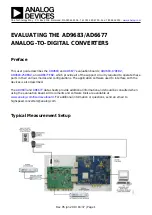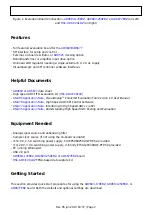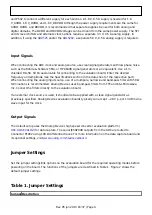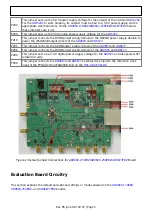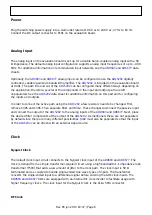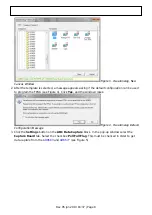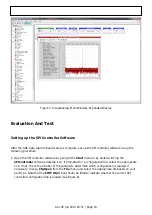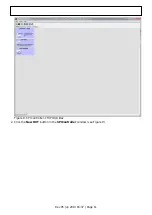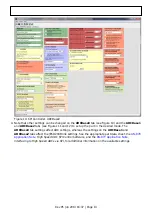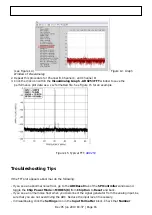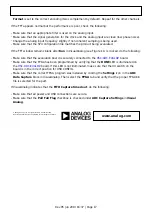
Rev 05 Jun 2013 16:37 | Page 6
Power
Plug the switching power supply into a wall outlet rated at 100 V ac to 240 V ac, 47 Hz to 63 Hz.
Connect the DC output connector to P101 on the evaluation board.
Analog Input
The analog input on the evaluation board is set up for a double balun-coupled analog input with a 50
Ω impedance. The default analog input configuration supports analog input frequencies of up to ~400
MHz. For additional information on recommended input networks, see the
sheets.
Optionally, the
and
analog input can be configured to use the
controlled, variable gain wide bandwidth amplifier. The
is included on the evaluation board
at U401. The path into and out of the
can be configured many different ways depending on
the application; therefore, several of the components in the input and output path are left
unpopulated. See the
data sheet for additional information on this part and for configuring
the inputs and outputs.
In order to connect the active path using the
a few resistors need to be changed. First,
remove C305 and C306. Then populate R311 and R312. These changes disconnect the passive input
and connect the output of the
and
the desired filter components at the output of the
. As mentioned, these are not populated
by default since there are many different possibilities. J404 must also be populated so that the input
of the
can be driven with an external signal source.
Clock
Nyquist Clock
The default clock input circuit connects to the Nyquist clock input of the
clock is derived from a simple transformer-coupled circuit using a high bandwidth 1:1 impedance ratio
transformer (T503) that adds a low amount of jitter to the clock path. The clock input is 50 Ω
terminated and ac-coupled to handle single-ended sine wave types of inputs. The transformer
converts the single-ended input to a differential signal before entering the ADC clock inputs. The
ADCs are equipped with an internal 8:1 clock divider to facilitate usage with
higher frequency clocks. The clock input for the Nyquist clock is the CLK+ SMA connector.
RF Clock

